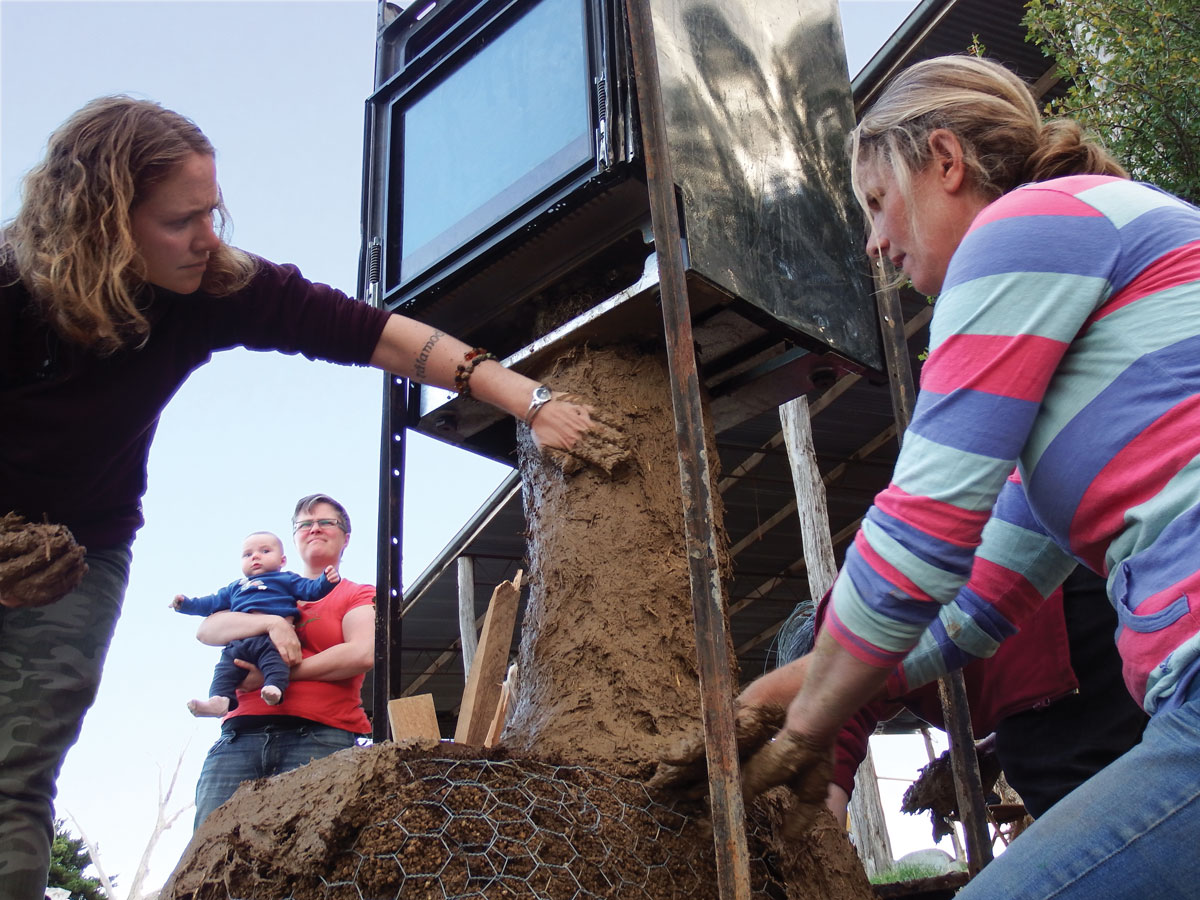
 21
21







Tim has come a long way since his days as a diesel fitter mechanic, and now spends his time between Australia and New Zealand (and sometimes the US) as a semi professional pyromaniac and mad scientist, teaching people how to burn stuff and make really cool machines and devices for low carbon living.

Joel draws on a deep well of experience (as an energy auditor, sustainable transport consultant, environmental educator among other things) which he combines with a rare knack for explaining technical issues in a clear and engaging way that cuts straight to the heart of matters. Joel has just finished owner-building his permaculture-designed property and strawbale house which features impressive passive cooling, heating lighting and water strategies, rocket stoves for heating and cooking, and a beautiful curved roofline that follows the path of the winter sun.
 2
2





 1
1




"Never doubt that a small group of thoughtful, committed citizens can change the world; indeed, it's the only thing that ever has."-Margaret Mead "The only thing worse than being blind, is having sight but no vision."-Helen Keller
 2
2





Get the 2017 Permaculture Calendar
 3
3




 1
1




Rob Griffin wrote:
Overall a book that can have you rethinking your oven requirements and for the price you should check it out.
PS
Just because you can get the oven up to almost 1000 degrees F, it does not mean you can flash cook frozen pizzas as the outsides will burn before the middle is thawed and cooked....this is how Tim was banned from cooking at the AT course...
Rob




 3
3




Author of The Rocket Powered Oven
I am leading the Permaculture Design Course and Appropriate Technology Course at Wheaton Labs in 2017.




"People may doubt what you say, but they will believe what you do."
 3
3




Author of The Rocket Powered Oven
I am leading the Permaculture Design Course and Appropriate Technology Course at Wheaton Labs in 2017.








Author of The Rocket Powered Oven
I am leading the Permaculture Design Course and Appropriate Technology Course at Wheaton Labs in 2017.





"People may doubt what you say, but they will believe what you do."








Author of The Rocket Powered Oven
I am leading the Permaculture Design Course and Appropriate Technology Course at Wheaton Labs in 2017.












Author of The Rocket Powered Oven
I am leading the Permaculture Design Course and Appropriate Technology Course at Wheaton Labs in 2017.




Tim Barker wrote:Hi Tyler unfortunately not. Im a physical book kind of person also. All i can advise is print it out double sided and ring bind it. That's what i did when i bought the ebook of Ianto's rocket mass heater book.




Tim Barker wrote:Hi Paul try here
https://permacultureprinciples.com/product/rocket-powered-oven/
Cheers Tim












 1
1




Tim Barker wrote:Hi Todd Actually there are lots of ways. Fuel wood size is one, lots of small sticks will give lots of heat while three bigish sticks will comfortably maintain a temperature range good for probably 95 % of cooking tasks a combination of both and you can get in between. Also manipulating the feed tube opening with a brick or such brings another layer of control The addition of some mass (not too much) will damp temp swings. Above all this is not a set and forget device you will have to brings some intention to your cooking which i think is a good thing and you will have to "Learn" your oven. Its very much an interactive process but we had an early rocket design that we cooked in and it was our only oven for two years we turned out everything from pizza to roast to cakes and cookies with no problems at all and it was a 3.9" system.
Cheers Tim
 1
1








Graham Chiu wrote:If you're going to cook more than one pizza at time, how many trays would you be able to stack with a 15.5" diameter? One? Two?




Zac Holtzman wrote:Hello Everyone,
I bought Tim’s book, read through it, and plan on building something in the “white oven” style. I have a few stainless steel beer kegs that I was thinking of using instead of barrel drums. The kegs have a 15.5” diameter. Do you guys think this is too small of an inner oven? Thanks









Graham Chiu wrote:@Ralph, actually my question was of a Socratic nature directed at Zac but having someone else do the actual calculations is useful

Has anyone documented how the base cooks in these ovens? Stones are normally used in pizza ovens since they drag moisture out of the base to make it crisp whereas a metal base boils the water in the base. The intense heat at the base also is what causes the pastry to puff up. Well, that's what I've read, but then I see baking steels being advertised which cook just as well as stones. So, what's the story?




 1
1




Graham Chiu wrote:Oil on a pizza stone is a big no no. No idea how one cooks pizza on a steel though.
https://www.pizzacraft.com/blogs/pizzacraft-blog/how-to-use-a-pizza-steel
Looks like you can put a stone above the steel to radiate heat on to the top of the pizza.[/yquote]
Hi Graham,
Sorry that I was apparently unclear. I was talking about the steel parts of the stove being treated so they would be a good cooking surface(s). This would also be to keep them from rusting. I was not planning to oil the stones, but thanks for the heads up. By the way many pizzas have been cooked on metal pizza pans.
Sincerely,
Ralph
Sincerely,
Ralph




















Graham Chiu wrote:It would be nice if someone who has one of these ovens pipes up to report on the cooking results of pizza in one of these ovens.
Sincerely,
Ralph
 2
2




The holy trinity of wholesomeness: Fred Rogers - be kind to others; Steve Irwin - be kind to animals; Bob Ross - be kind to yourself





| I agree. Here's the link: http://stoves2.com |




